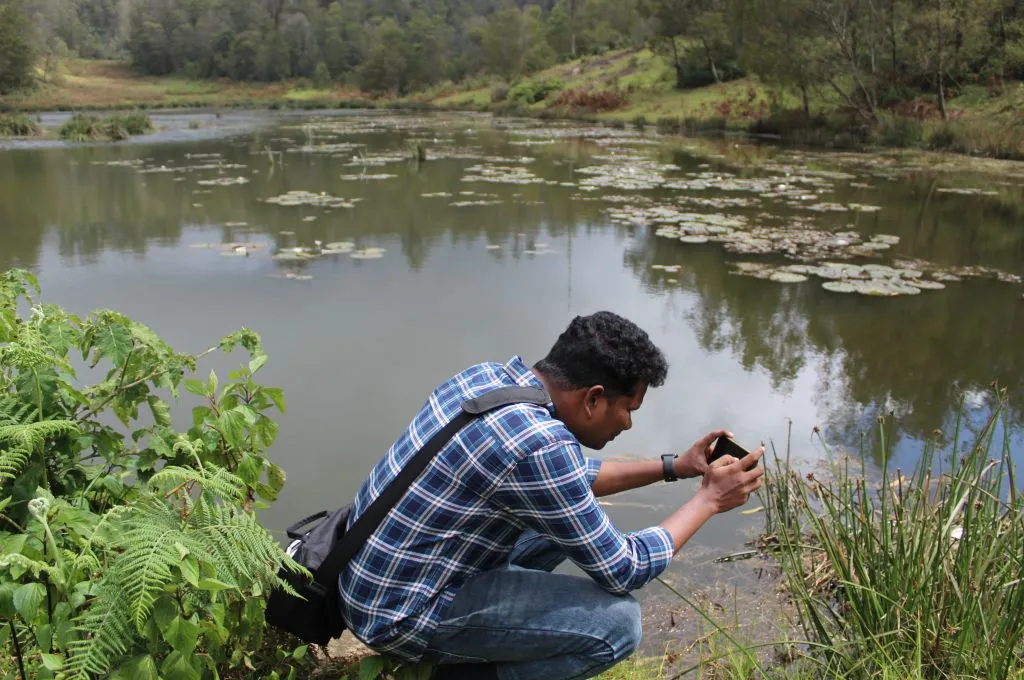In the last three years, a significant amount of wealth has been generated through initial public offerings (IPOs). Of the 199 IPOs made since 2020, INR 52,000 crore has been mobilised from just 35. This surge in wealth has created 166 billionaires—a whopping increase of 63 percent from 102 billionaires in 2020. But giving has increased by a measly 8–10 percent year on year, and a sizeable proportion of this is due to government-mandated corporate social responsibility (CSR). In essence, not much has changed since a 2019 IDR analysis that reported a large growth in the number of people with wealth but a decline in philanthropic effort.
Philanthropy in India is not keeping pace with the need for funds among nonprofits. CSR funding is being directed towards causes and organisations considered ‘safe’, and an increasing number of FCRA licenses are being cancelled. The result is twofold—there is less money allocated to causes that are not urban-centric, or that engage with ‘intangible’ issues such as justice, equity, and well-being. And the supply-side market for philanthropy is reducing.
The cancellation of licenses for foreign funding would not have made much of a difference if enough wealthy Indians had stepped in to plug that gap. However, since that is not the case, it is now up to nonprofits to become better fundraisers at a time when there aren’t enough funders in the first place.

The onus of expanding the philanthropy market should be on funders
There are several examples of this. Stanley Levinson, a businessman and lawyer, was an ardent supporter of the civil rights movement in the US. He used his influence to build the fundraising strategy for the Southern Christian Leadership Conference, Martin Luther King’s organisation that helmed the civil rights protests. Closer home, business leaders like G D Birla, Jamnalal Bajaj, and Purshuttamdas Thakurdas were instrumental in supporting the Independence movement and seeding the roots of several Gandhian institutions. And in the more recent past, the late Dutch businessman Ferd Van Koolwijk created Partnership Foundation in the Netherlands to raise money from Dutch businesses to support the work of Rainbow Homes in India. We’ve also seen how Azim Premji has single-handedly bolstered domestic funding through his contributions.
What can funders do?
Philanthropists have the power of privilege—something that gives them the wherewithal to negotiate the most intractable issues. The current social and political environment must therefore be seen by domestic funders as an opportunity to leverage this power and fill in important gaps.
Listed below are some pointers on what philanthropists can do to help and support civil society organisations (CSOs) in these testing times.
1. Expand the common ground for funding
The number of millionaires in India has been on the rise for the last decade and is expected to almost double by 2026. While many of them share their wealth via community platforms (temples, schools, hospitals, and clinics), hardly ever does this money translate into long-term funding for civil society.
Philanthropists can build common ground and negotiate for greater social participation from those who have benefitted from the economies of scale.
Existing philanthropists and business persons have the capacity to engage with those who have newly acquired wealth and help them expand their horizons. This engagement needs to increase given the fast pace at which wealth creation is happening with new-generation founders. One lesson we universally learned during COVID-19 is that one person’s problem is everybody’s problem. In a post-COVID world, there is scope for greater sensitivity to recognising that if we let something fester, it will inevitably land on our doors.
With power, connections, and influence, philanthropists can build this common ground and negotiate for greater social participation from those who have benefitted from the economies of scale. It needs unique approaches and methods, including one-on-one engagement, building intermediary structures, and highlighting the value that civil society provides to their businesses and the country at large.
2. Build social protection mechanisms
In a survey by GuideStar India, 64 percent of nonprofits revealed that their employees are the primary breadwinners in their families. Funders can collaborate to create safety nets, such as pooled insurance and emergency support, to help social workers navigate times of distress. With funding and advocacy for the sector shrinking, it faces a significant loss of talent, accumulated wisdom, and invaluable years of experience.
Large funding organisations have an opportunity to appoint experienced social workers as CSR or philanthropy coordinators, thereby recognising their expertise in the field. This would be far better than frontline teams having to work as mechanics, labourers, or marketing agents, in the absence of jobs that use their accumulated knowledge and networks in the community.
3. Leverage their government access to speak for the sector
Many philanthropists have access to government officials and ministers by virtue of the businesses they run. This access is leveraged for collaborating on public–private partnerships, introducing easier regulations, or making it easier to do business. However, this privilege is not available to nonprofits, particularly since there is no collective or industry body for the sector. While nonprofit leaders may be able to form connections with state leaders for their programmes, they struggle to be part of conversations with, say, a union minister or national-level bureaucrats.
Philanthropists who have this access can act as spokespeople for the sector. Given their experience working with nonprofits and seeing the benefits to communities first-hand, they can sensitise government officials to the challenges faced by CSOs and which norms need to change to create a more enabling environment for them to do their work.
4. Create new streams of funding
If donors would like their nonprofit partners to become financially sustainable, they must also start considering how new and innovative funding streams can be created. The Social Stock Exchange is one potential experiment—there is a need to reduce barriers so that it becomes widely accessible to nonprofits. There have been some experiments with instruments such as development impact bonds and mutual funds focused on charity causes as well. It is a good time to learn from these approaches and find better ways to channelise funding.
We need to come up with solutions that will enable trust, promote market participation, and make it easier for people to give. For all of this to happen, these experiments will have to be backed by companies that already have strong, trust-based relationships with people.
5. Build greater sensitivity and engaging in field visits
When founders start a company, they usually conduct market research to understand customers’ needs, constraints, and aspirations. Similarly, one needs to speak to communities and fieldworkers to understand the problems and pain points that a nonprofit is working on. In many cases, funders are at least five degrees removed from the on-ground realities they seek to change, which impacts the quality of any CSR and philanthropy decisions that they take.
For example, Zerodha has a programme where it allocates funding to any employee who is willing to work towards solving a local issue related to climate change and livelihoods. Rainmatter Foundation, Zerodha’s philanthropic arm, lends technical and advisory support to such initiatives. This brings employees closer to the problems in their neighbourhood and helps them understand the complexities of social change directly. Additionally, it acts as a feedback loop for the foundation and helps them remain in touch with ground realities.
6. Use social networks to drive long-term philanthropic capital
The challenge with funding through business is that much of the giving process is measured on a quarterly, or sometimes even monthly, basis. However, social change is not a monthly, quarterly, or annually measurable process. In addition, reporting on fixed metrics trivialises the hard work of CSOs. Furthermore, social funding is sometimes equated with social marketing. Unless some of these attitudes change and philanthropists see themselves as part of the changemaking process, it is likely that problems around funding will persist.
Funders need to commit to at least five to 10 years of funds to the organisations they support. If this seems hard to do individually, they can partner with fellow philanthropists and take turns to fund an entity. This means that one needs to be able to share credit with many other philanthropists. Initiatives such as LivingMyPromise and Social Venture Partners—both of which are networks of philanthropists who interact with and learn from each other—can be leveraged to identify ways to provide nonprofits with long-term funding.
7. Collaborate to build knowledge and learning commons
Shared insights from programmes and organisations are invaluable in guiding philanthropists away from potential risks and pitfalls. This hinges on two key factors: firstly, a culture of openness among philanthropists and their teams so that they can candidly share both successful and challenging experiences; secondly, the establishment of a trustworthy, inclusive ecosystem that transcends varying ideologies and approaches, and where learnings can be shared and documented.
To continue and build on years of good work, philanthropy must fully show up for civil society.
At the very least, a database that categorises philanthropic endeavours by donor profiles, geographic focus, target communities, and thematic areas would prove invaluable. Such a resource holds potential for fostering collaborations, preventing redundancy, and facilitating supplementary work.
Moreover, this database could serve as a forum for evaluating the merits of diverse strategies, co-creating standards, and analysing the risks inherent in different philanthropic models. A platform developed with the help of experts working across social development domains could offer informed, evidence-based guidance. It would also help counter potential echo chambers within philanthropic teams.
India has propelled itself to becoming the world’s fifth largest economy, but this progress has only touched a few pockets in the country. Those who need development are the last ones to have access to it. And while the social sector has seen a significant annual increase in expenditure, a lot more needs to be done moving forward. CSOs play a critical role in driving innovation, highlighting success stories, and engaging with very difficult problems that sometimes even governments are not able to address. To continue and build on years of good work, philanthropy—especially from domestic sources—must fully show up for civil society. Otherwise, we are all culpable in reversing the tide of development.
—
Know more
- Read this report to learn more about the philanthropy landscape in India.
- Read this article to learn about the impact of nonprofits losing their FCRA licenses.





